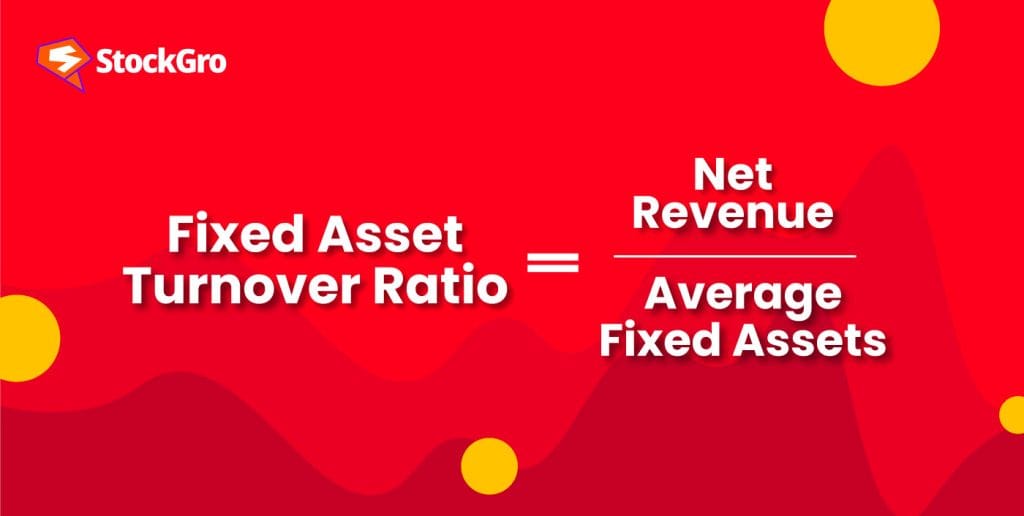
Looking at the fixed asset turnover ratio is one of the most effective methods for assessing how efficiently a company utilises its assets. This vital tool displays how much a company’s fixed assets can sell its product besides giving significant information about operational strength as well as execution of strategy.
This article will delve into the meaning of fixed asset turnover ratio, its interpretation and how to calculate fixed asset turnover ratio.
Must read: Unlocking financial insights: The power of ratio analysis
What is the fixed asset turnover ratio?
Investors can gain insights into a company’s efficiency and the percentage of net sales associated with property, plant, and equipment (PPE) or other fixed assets by examining the fixed asset turnover ratio.
The fixed asset turnover ratio basically shows you how well a company is using its long-term assets to make money. If the ratio is high, it means the business is doing a good job using its fixed assets to drive sales. On the other hand, a lower ratio could mean the company isn’t making the most out of its resources. The fixed asset turnover ratio can be calculated by dividing the Net Sales of a company by its Average Net Fixed Assets.
This ratio is especially important for industries like manufacturing and utilities, where companies invest a lot in fixed assets. Investors and analysts use it to compare different companies in the same sector to see which ones are using their assets most effectively. But it’s good to keep in mind that the interpretation of this ratio can change depending on the industry as some sectors naturally need bigger investments in fixed assets than others.
It’s also worth noting that this ratio has its limitations. It doesn’t consider the age or condition of the assets, which can really impact their performance. Companies with older assets might have a lower ratio because of depreciation, even if they’re running efficiently. That’s why it’s smart to look at the fixed asset turnover ratio along with other financial measures, like return on assets (ROA), to get a clearer picture of a company’s overall efficiency and profitability.
Master the return on assets ratio with ease! Our detailed breakdown of the return on total asset ratio formula explains what is return on assets.
Fixed Asset Turnover Ratio Formula?
The formula for the fixed asset turnover ratio is as follows:
Fixed asset turnover ratio= Net SalesAverage Fixed Assets
To be used in this formula is average fixed assets, which can be found using the following equation:
Average fixed assets= (Opening Fixed Assets + Closing Fixed Assets)2
Fixed assets are the assets that businesses use to make money in the long run. These include land, buildings, machinery, tools, furniture, fixtures and vehicles.
The fixed asset turnover ratio conveys how well a company is capable of converting its fixed assets into revenue. The ratio can also be efficiently computed using fixed asset turnover ratio calculators online.
Example:
These are a few of the financial results of Tata Motors Ltd for the FY 2024:
| Particulars | Amount (₹ lakhs) |
| Opening fixed assets (PPE) | 11,707.87 |
| Closing fixed assets (PPE) | 11,563.76 |
| Net sales | 72,745.92 |
Source: Tata Motors
Using these figures, let’s calculate the fixed asset turnover ratio for the company:
Average fixed assets= (11,707.87 + 11,563.76)2= 11,635.815
Fixed asset turnover ratio= 72,745.9211,635.815 = 6.25 times
This means that Tata Motors Ltd made ₹6.25 in net sales for every rupee it owned in fixed assets during this time.
You may also like: Mastering revenue expenditure – Categories, impacts and management
Fixed asset turnover ratio interpretation
Although there is no universal ideal fixed asset turnover ratio, let’s delve into what a low and a high fixed asset turnover ratio means.
When a business is not generating adequate income from sales but has significant fixed assets, the FAT ratio may be low. It is mainly true for companies that make things and use big machines and buildings.
Not all low ratios are bad, but low FAT may be a bad sign if a company has just purchased many new fixed assets to modernise them. Moreover, if the ratio is decreasing, it could mean that the company is investing too heavily in its fixed assets.
A high ratio is what most businesses want. It means that fixed asset management is better, which means that investments in assets earn more money. If the change rate is high, it means that the assets are being used well.
It also means that a reasonable amount of assets are being used to make a lot of sales. It could also mean that the company has started to hire other people to do its work after selling off its tools. Outsourcing would result in the same number of sales while less money would be spent on tools.
Limitations and considerations
- Cyclical sales impact: Companies whose sales go up and down with the market may have different FAT rates at different times. When the economy is weak, sales may drop, which could make the number worse. To account for changes, it’s essential to look at the ratio over a number of different time periods.
- Outsourcing and asset reliance: The FAT ratio can be changed by management’s choices. Outsourcing output, for example, might make the ratio look better than it really is because it lowers the reliance on fixed assets. However, this doesn’t always mean that cash flows will be stable or that the business will be healthy generally.
- Profitability vs. asset efficiency: A high FAT ratio doesn’t always mean that a business will make money. Even though making good use of assets is essential, it doesn’t show how profitable a company is. There are no other costs taken into account by the ratio; it only looks at net sales and fixed assets.
Also read: Market cycles: Riding the rollercoaster of stocks
Bottomline
The ratio of fixed asset turnover is a helpful financial analysis tool because it helps us understand how effectively a business uses its properties. Nevertheless, to ensure that appraisals are correct and meaningful, they need to be considered within the context of industry-specific factors and broader economic conditions as well.
FAQs
- What if the fixed asset turnover ratio is greater than 1?
If the Fixed Asset Turnover (FAT) ratio is greater than 1, it is often considered good. In other words, this means that the company makes enough money from its current fixed assets. A number above 1 indicates that these assets are making more money than they cost in the first place. A higher ratio means that assets are being used efficiently, which is suitable for the company’s total performance.
- What causes fixed asset turnover to increase?
Calculate the ratio of fixed asset turnover for a firm by dividing net sales by average fixed assets. A strong product demand, quick production processes, or utilising appropriate equipment can all result in increased FAT ratios. However, extreme turnovers may imply insufficient resources or excess capacities, requiring additional investments or streamlining efforts. As years pass by, continuous depreciation leads to a decrease in the denominator unless new investments replace old ones.
- What happens if the fixed asset turnover ratio decreases?
When the fixed asset turnover rate declines, it may signal an issue with the company’s long-term resource management. It suggests that the company has potentially invested excessively in property, plant, and equipment (PPE) without a corresponding increase in sales. Also, falling ratios can mean that sales aren’t going well, especially if it takes longer for new investments to bring in money, which hurts total efficiency. Learn about Efficiency ratios; they are financial indicators that analyse how a company utilises its assets and liabilities, known as resources, to maximise its income and profits.
- What is the fixed assets ratio also known as?
The fixed assets ratio, also known as the capital asset ratio, shows what fraction of all the properties owned by an organisation are immovable. It concentrates on the percentage of total assets represented by fixed investments, more specifically, land and buildings. This solvency ratio shows how much a business depends on physical assets for its operations. It does this by dividing net fixed assets by long-term funds. Learn more about working capital turnover ratio it reveals a company’s ability to utilise its working capital effectively. A high ratio means that the company is very good at making sales without keeping too much inventory or acquiring the current liabilities that are not necessary.
- Is bank balance a fixed asset?
A bank balance is not considered a fixed asset. Fixed assets are tangible items used by businesses over a long period with the aim of making money. These assets lose value as time goes by, mainly because they wear out through usage. Conversely, liquid money held within the bank accounts can be shown as bank balances. It falls under current assets, which are expected to provide economic benefits within one year.

